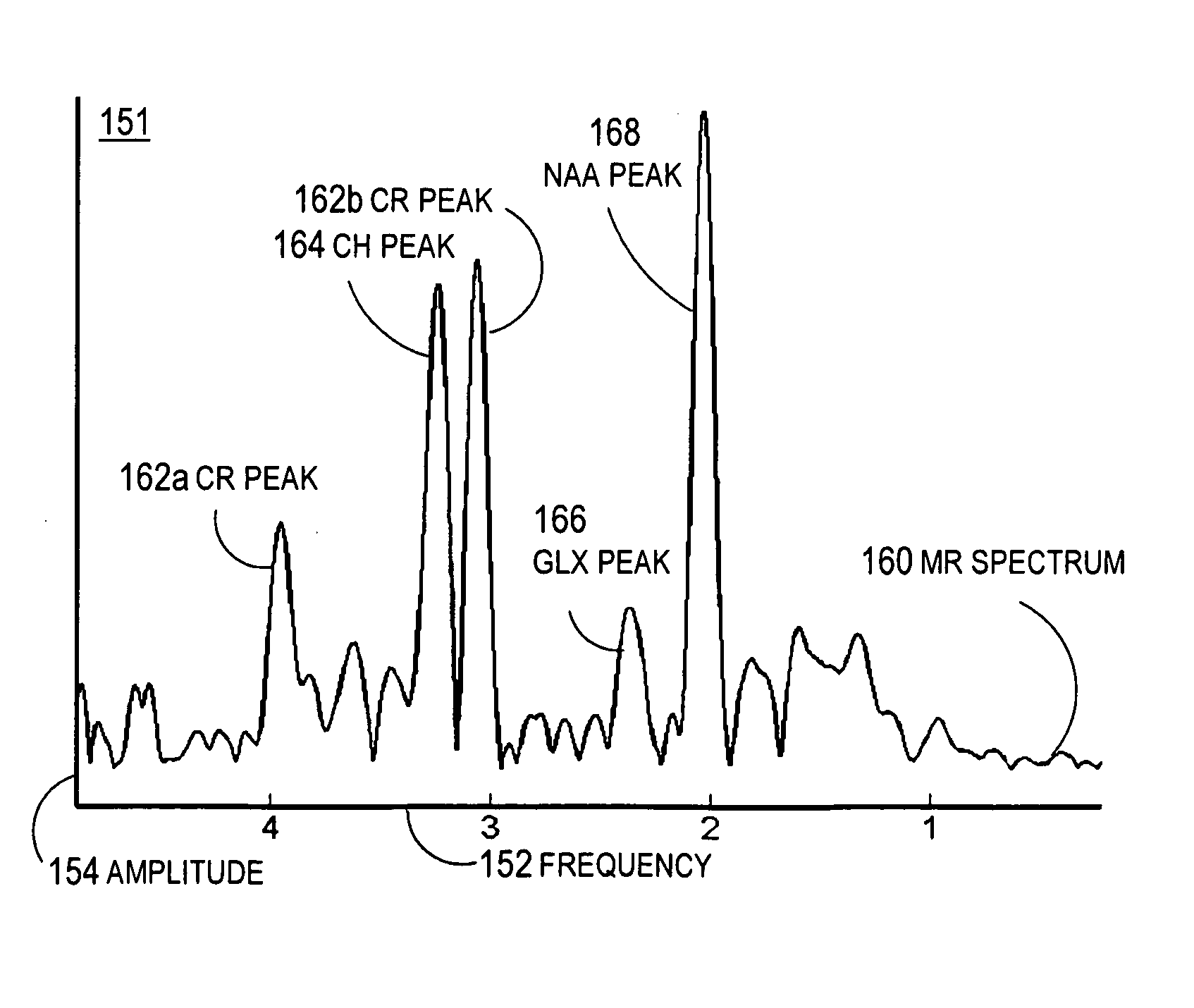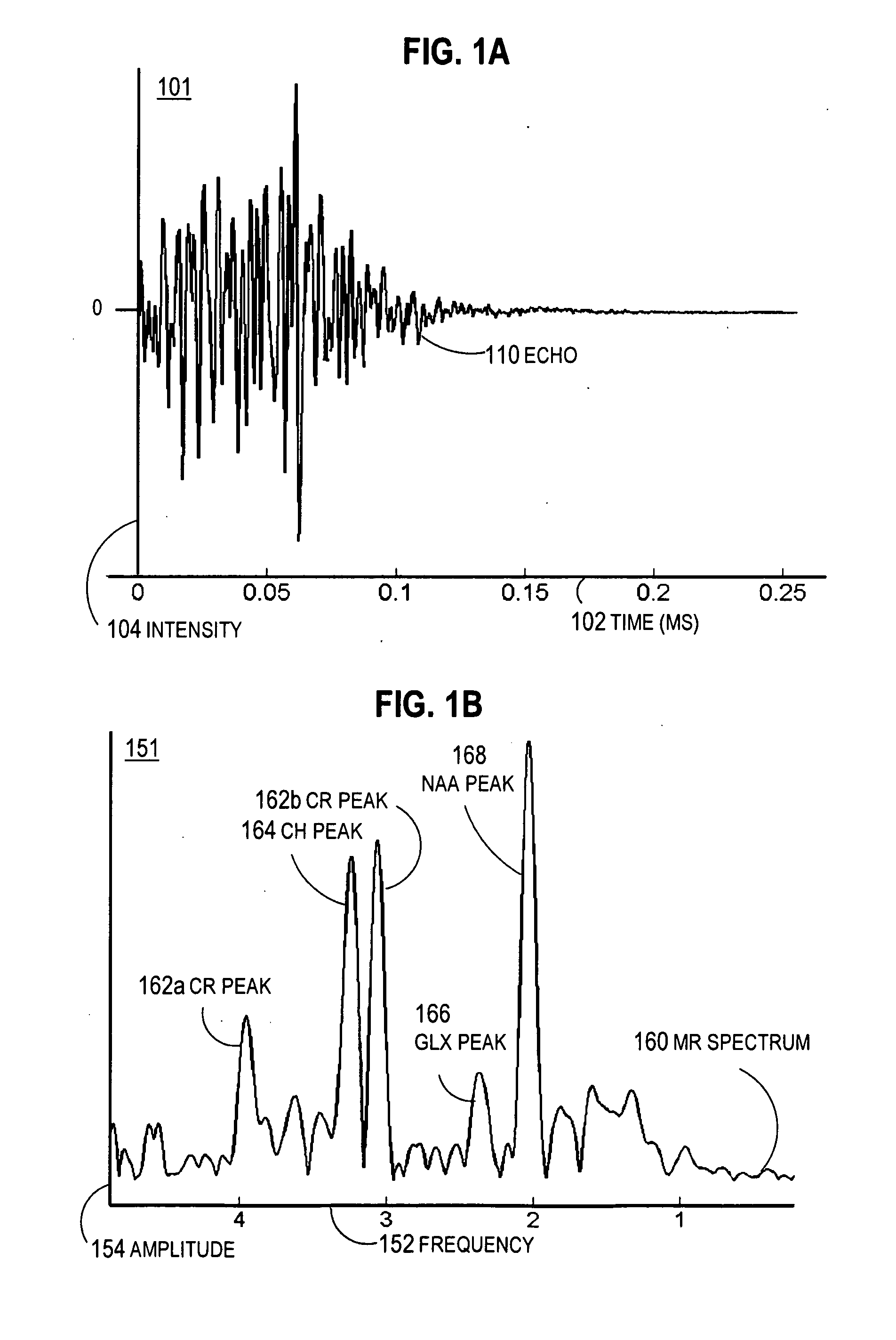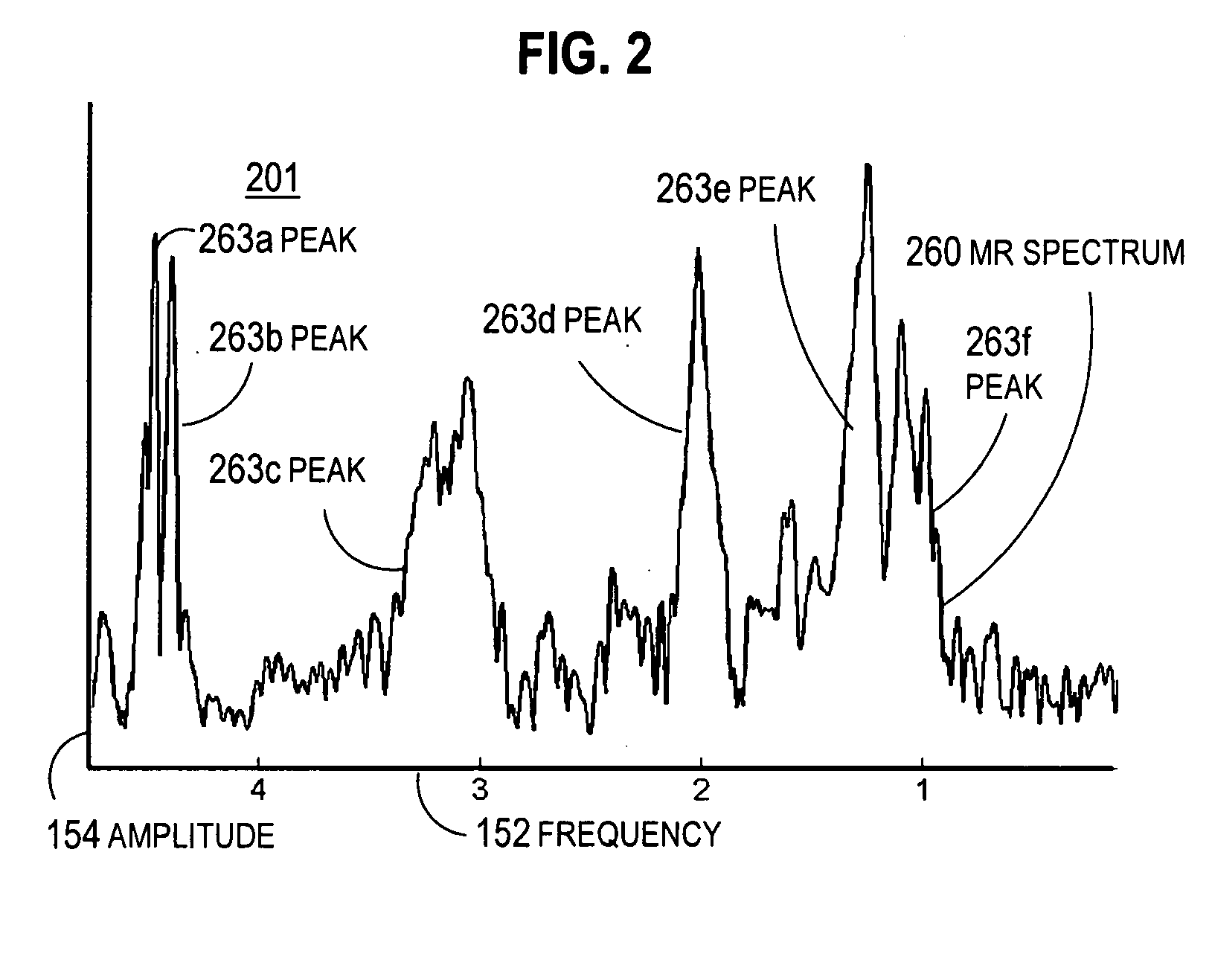Spectral resolution enhancement of magnetic resonance spectroscopic imaging
a spectroscopic imaging and spectroscopic enhancement technology, applied in the field can solve the problems of reducing spectral resolution, reducing the separation of peaks in the spectrum, and difficult or impossible detection and quantification of some or all of those metabolites, and achieve the effect of enhancing the spectral resolution of magnetic resonance spectroscopy (mrs)
- Summary
- Abstract
- Description
- Claims
- Application Information
AI Technical Summary
Benefits of technology
Problems solved by technology
Method used
Image
Examples
Embodiment Construction
[0002]This invention was made with partial government support for Zhengchao Dong by the New York State Psychiatric Institute (NYSPI). The government has certain rights in the invention.
BACKGROUND OF THE INVENTION
[0003]1. Field of the Invention
[0004]The present invention relates to magnetic resonance spectroscopy (MRS), and in particular to enhancing spectral resolution of MRS and MRS imaging (MRSI) by de-convolving the effects of spatial variations in the base magnetic field (B0) determined from magnetic resonance imaging (MRI). In the following, the base magnetic field or static magnetic field may represent the combination of the external magnetic field and the macroscopic effects of the tissue susceptibility.
[0005]2. Description of the Related Art
[0006]Nuclear magnetic resonance (NMR) studies magnetic nuclei by aligning them with an applied constant magnetic field (B0) and perturbing this alignment using an alternating magnetic field (B1), orthogonal to the constant magnetic field...
PUM
 Login to View More
Login to View More Abstract
Description
Claims
Application Information
 Login to View More
Login to View More - R&D
- Intellectual Property
- Life Sciences
- Materials
- Tech Scout
- Unparalleled Data Quality
- Higher Quality Content
- 60% Fewer Hallucinations
Browse by: Latest US Patents, China's latest patents, Technical Efficacy Thesaurus, Application Domain, Technology Topic, Popular Technical Reports.
© 2025 PatSnap. All rights reserved.Legal|Privacy policy|Modern Slavery Act Transparency Statement|Sitemap|About US| Contact US: help@patsnap.com



